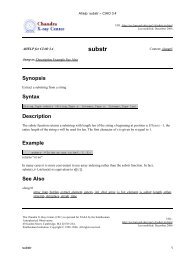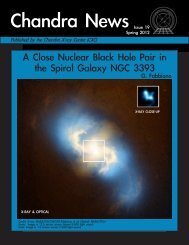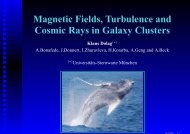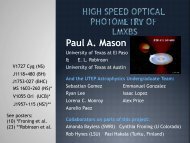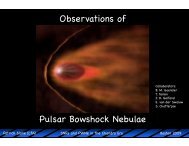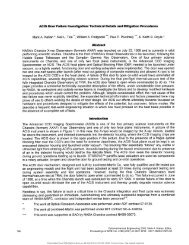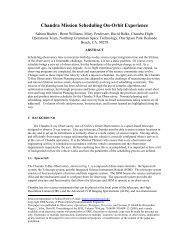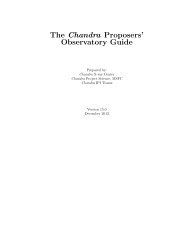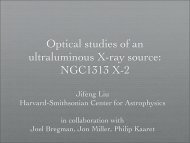observational overview of state transitions in x-ray binaries
observational overview of state transitions in x-ray binaries
observational overview of state transitions in x-ray binaries
Create successful ePaper yourself
Turn your PDF publications into a flip-book with our unique Google optimized e-Paper software.
RAPID X-RAY VARIABILITY<br />
• power density spectra (1 mHz - 1 kHz)<br />
• broad (noise) and narrow (QPO) components<br />
• correlates with spectral properties and map well<br />
onto HID<br />
When I talk about rapid variability, I typically mean frequencies between 1 mHz and 1 kHz.<br />
This rapid variability is <strong>of</strong>ten studied terms <strong>in</strong> terms <strong>of</strong> power spectra, s<strong>in</strong>ce most <strong>of</strong> the<br />
variability is too fast and/or too weak to be seen directly <strong>in</strong> the light curve. As Phil Uttley<br />
showed this morn<strong>in</strong>g, the power spectra <strong>of</strong>ten show comb<strong>in</strong>ations <strong>of</strong> broad components,<br />
which are <strong>of</strong>ten referred to as noise, and narrow features referred to as quasi-periodic<br />
oscillations, or QPOs. The rapid X-<strong>ray</strong> variability changes strongly between <strong>state</strong>s and their<br />
evolution maps well onto the HID.



